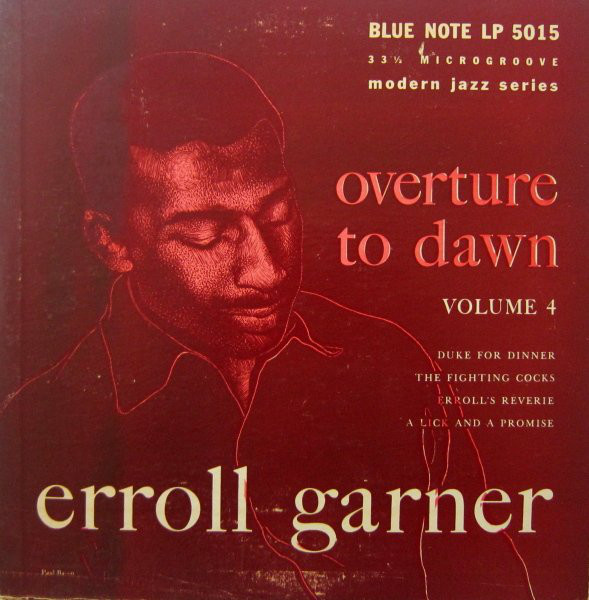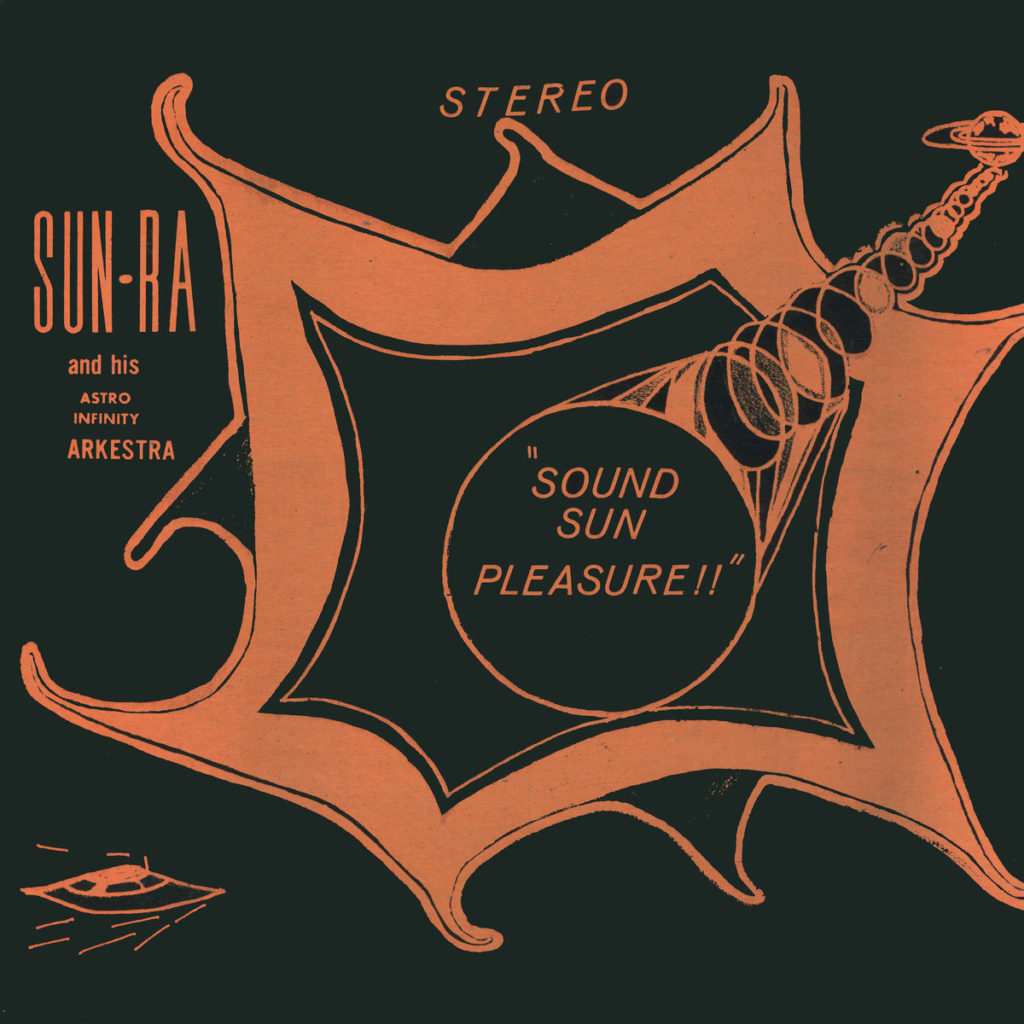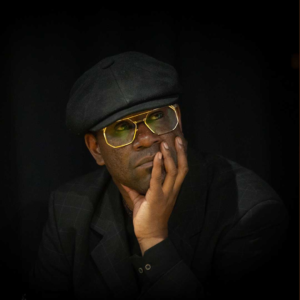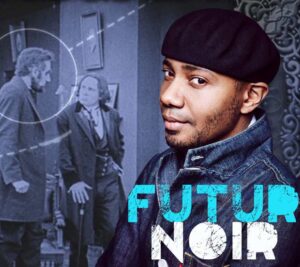FUTUR NOIR
Text: The Brave Sleep Alone.
The musical pieces that appear in Futur Noir embody the union of the most irresolvable equations that have occurred in the Afrofuturist movement itself.; introduce a new accessible entertainment with that transgressive point that always works. The sounds float in space: raw, analytical and stupid. I try to squeeze and investigate experimental electronics in the black community. Thus, Los valientes duermen solos, brings together in what we could call following Bataille a "community without community"preserves the singularity of each one, which makes reappropriation in a corpus or school impossible. Well, this is for Los valientes duermen solos the experience not only of a deconstruction but of art in general.

I immerse myself in the task of searching for the right approach. Beyond its flaws is that generation of authors that distilled aromas of a goldsmith, of a generation that amounts to a rabid creative manifesto, and that astonished, upset and expanded our society to the realism of asking for the impossible. In 1944, Erroll Garner was recorded playing solo or for his colleagues, in either situation freed from the pressure of having to please an audience or the club owner. Overture to Dawn (Overture for the dawn) show his true self-taught genius, with no trace of that need to impress that seemed to oppress him. The music feels relaxed, expansive, playful. Acetate discs allowed the length of each piece to extend to over ten minutes. By the standards of the time, this freed the improvisational imagination from Garner as much or more from time constraints than from commercial imperatives. These sessions were later published by Blue Note in 1953: Timme Rosenkrantz on his precious acetate discs in 1944 is closer to what we would consider today as experimental free improvisation.
It seems to me that what they were doing was very advanced for the time, very open. There was a line. Behind it opened up the unknown, where free was synonymous with giving up making money. Those who were still trapped in that dream of freedom had three options: retreat, open laterally towards something less vertiginous, or cross it. I find it more difficult to understand why that experience with Sun Ra Trio had such a profound and lasting impact on that Chicago of 1948 and 1949. According to the biographer John F. Szwed, Ra had just acquired an Ampex paper tape recorder. The drummer Tommy "Bugs" Hunter played with brushes on a telephone book, Ra played the piano with one hand and with the other a Hammond Solovox organ whose monophonic notes of théremin-like sonority offered a nervy stratospheric counterpoint to the violin of Stuff Smith.

I like the less perfect, less studied work, the one in which you have totally invested yourself. With adulthood a Gallic symbolist poet said that: "the child abdicates his ecstasy".. Miles Davis remained the soundtrack of my childhood, it always ruled the atmosphere in my father's workshop. My first lesson was the so-called frontal side light: the light hits the model from the front, the shadows are practically hidden behind the model. The volume and sense of depth are not emphasized. The bodies stand out mainly because of their own color. And the twelve photographs of the face of Thousandsin grayscale, which appear inside the album of Miles Davis, Live-eviLbecame the most complete exercise. My father pointed out to me how the image of Thousands is drawn and blurred, enveloping the form, as much as its music. The atmosphere, the air, the depth. "The color. First I get the color. Then I improvise everything else. I work with the subconscious, like in music." These are the words of Thousandson his famous paintings at the Munich exhibition, a painting inspired by the work of Basquiatas a result of their connection through Jo Gelbard. Thousands doesn't want to talk about music, he wants to talk about other things. And here, in this writing, it happens a little bit the same, in each drawing, in each writing, what tries to be, as simple as it may be, is everything I have learned up to that moment.

MBW
Based in Hull (United Kingdom), MBW is a multi-disciplinary audiovisual artist and liantee, originally from Bristol and of Jamaican heritage, his long-term artistic collaborations are conveyed at the intersections of immersive experiential film installations and provocative actions/performances. His collaborative artistic activities eloquently ask hard-hitting, relevant and meaningful questions that address human suffrage, racism, gender exploitation, injustice, control and the hyper-normalization of humanity.
BLACK LIVES MATTER
FUTUR NOIR
A Modern Original
File asTypography, Documentary Filmmaker, Guerrilla TV, Radio Broadcasting, Performance Film, Immersive Theater, Spoken Word, Walking Tours and Street Intervention.
You can review MBW's archive of Doodlebug Nuggets radio programs. here

MVW
This second Futur Noir series, curated by Michael Barnes Wynters (MBW)presents the definitive Futur Noir universe of the artist, (de)composer and autodidact. Michael Valentine West (MVW).
MVW uses techniques learned from various musical disciplines such as minimalism, ambient, glitch, hip hop, jazz, post-classical and sound design.
Michael has also released albums and EPs in various forms: Twiggy and the K-Mesons, Suck Susan, Lower Third, Mikimo Sosumi and Anal Teens.
FUTUR NOIR
He has also written and composed soundtracks for several independent short films.
His work has been released to critical acclaim on labels such as Subcontinental Records, Minus Listens, Daddy Tank, Bedroom Research, KaerëUiks, Ana Ott, Irrational Media Society, uvg212, Section 27, Abstrakt Reflections and Future Disorder.
He currently resides in the United Kingdom.
He is of Jamaican heritage
She has a dog named Lola.

PAUL D. MILLER
This third Futur Noir series, curated by Michael Barnes-Wynters (MBW) presents a selection of the extensive work of the composer, conceptual artist and writer, Paul D. Miller aka DJ Spooky > That Subliminal Kid.
FUTUR NOIR
Miller is described as a Einstein with a better haircut, a Tolstoy a streetwise black, a renaissance man for the digital age obsessed with art, information and digital technology. Arguably, no one is more responsible for propagating and embodying the idea of the DJ as "artist" than DJ Spookywhose ambitious, elaborate and often hypnotic soundscapes have stood out as much for their imagination as for their postmodern intellectualism.
Music selection blocks 1, 2*, 3 and 4 by: The Brave Sleep Alone
Music selection blocks 5, 6, 7, 8, 13, 14, 15 and 16 by: MBW.
Curated by MBW presents the universe of Michael Valentine West (MVW) in blocks 9, 10, 11 and 12.
* Ishak Benavides